The stubborn battle for Silesia
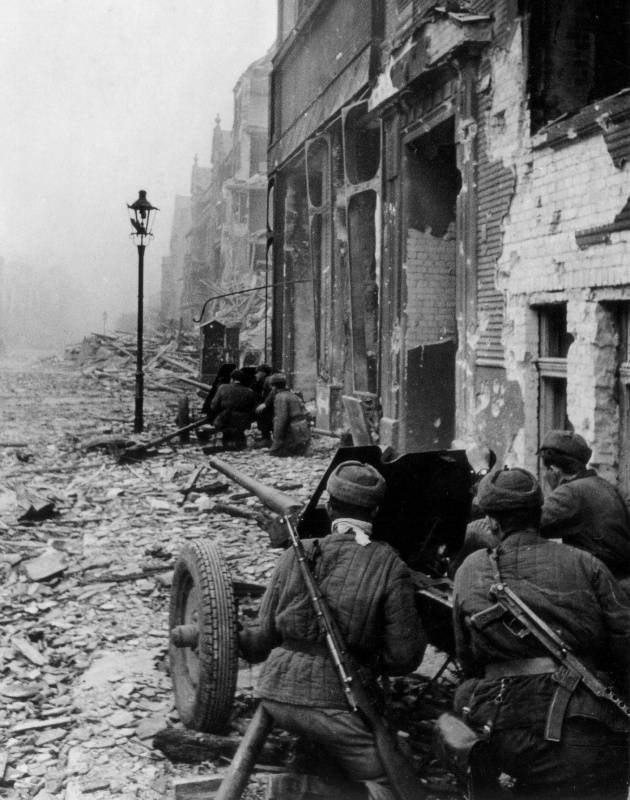
75 years ago, in February 1945, the Red Army carried out the Lower Silesian offensive operation. Troops of the 1st Ukrainian Front under the command of I. S. Konev defeated the German 4th tank army, advanced deep into the territory of Germany for 150 km and over a wide section reached the Neisse River.
The threat to the left wing of the 1st Belorussian Front aimed at Berlin was eliminated, a part of the Silesian industrial region was occupied, which undermined the military and economic power of the Reich. Soviet troops besieged the cities of Glogau and Breslau, where an entire army was blocked.
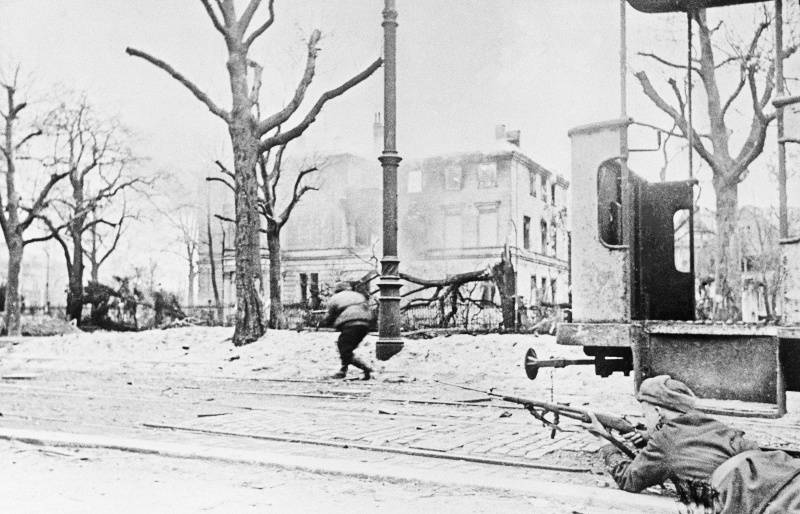
General situation
The battle for Silesia began in January 1945, when the troops of the 1st Ukrainian Front (1st UV) under the command of I. S. Konev conducted the Sandomierz-Silesian operation (January 12, February 3, 1945). This operation was an integral part of the larger Vistula-Oder operation of the Red Army (“Wisla-Oder operation. Part 2") Russian troops defeated the German 4th Panzer Army and the 17th Field Army (Kielce-Radom group). The 1st UV Army liberated the southern part of Poland, including Krakow and the part of Silesia belonging to the Poles. Konev’s troops crossed the Oder in several places, captured bridgeheads and in early February secured themselves on the right bank of the river. Conditions were created for the further liberation of Silesia, an attack on Dresden and Berlin.
At the same time, the fighting continued after the completion of the main battle. Parts of the 3rd Guards Army of Gordov and the formations of the 4th Panzer Army Lelyushenko finished off a blocked enemy group in the Rutzen area. The troops of the 5th guard army of Zhadov and the 21st army of Gusev fought in the vicinity of the city of Brig. The city stood on the right bank of the Oder, the Nazis turned it into a powerful stronghold. Soviet troops occupied bridgeheads south and north of Brig and sought to unite them. As a result, they solved this problem, connected the bridgeheads, blocked the city and took it. One big foothold was created. There were also local battles, finishing off the remnants of German troops in the rear, expanding and strengthening bridgeheads, etc.
Meanwhile, the German command as soon as possible formed a new defensive line, the basis of which became the fortress cities: Breslau, Glogau and Lignitz. Having no resources and time to equip a new powerful defensive line like on the Vistula River, the Germans laid emphasis on fortified cities with a double system of fortifications (external and internal), strong points. Powerful brick buildings, train stations, depots, barracks, ancient medieval fortresses and castles, etc. were turned into defense nodes, the streets were blocked with anti-tank ditches, barricades, and they were mined. Defense nodes occupied separate garrisons, armed with anti-tank rifles, machine guns, mortars and faustpatrons. They tried to tie all the small garrisons with communications, including underground ones. The garrisons supported each other. Adolf Hitler ordered the defense of the fortress until the last soldier. The morale of the German troops was high until the surrender. The Germans were real warriors and fought not only because of the threat of punitive measures, but also as patriots of their country. Inside the country they mobilized everyone they could: officer schools, SS troops, various security, educational and special units, and militias.
The German Empire then had several industrial areas, but the largest were the Ruhr, Berlin and Silesian. Silesia was the largest and most important East German province. The area of the Silesian industrial region, the second in Germany after the Ruhr, was 5-6 thousand square kilometers, the population is 4,7 million people. Cities and towns were densely located here, the territory was built up with concrete structures and massive houses, which complicated the action of mobile connections.
The Germans concentrated large forces for the defense of Silesia: formations of the 4th Panzer Army, the 17th Army, the Heinrici Army Group (part of the 1st Panzer Army) from the Army Group Center. From the air, Hitler's troops were supported by the 4th Air Fleet. In total, the Silesian group consisted of 25 divisions (including 4 tank and 2 motorized), 7 battle groups, 1 tank brigade, and the Breslau corps group. It also had a large number of separate, special, training units, Volkssturm battalions. Already during the battle, the Hitler command threw them in this direction.
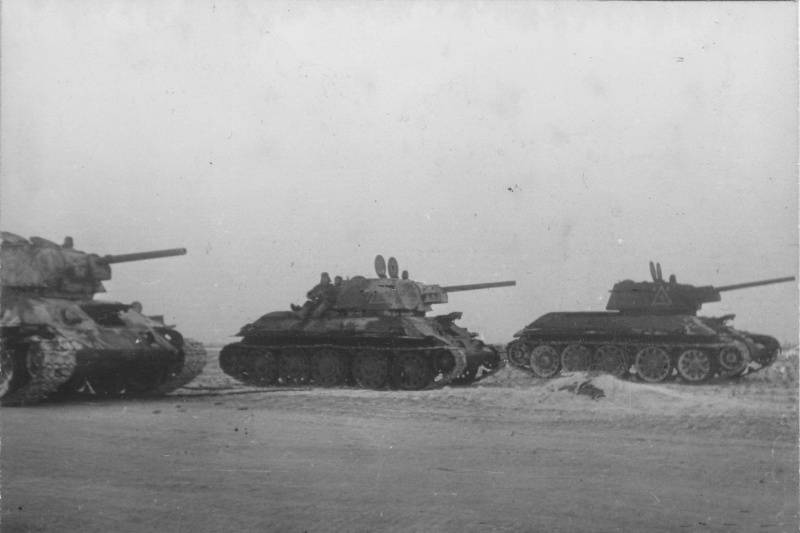
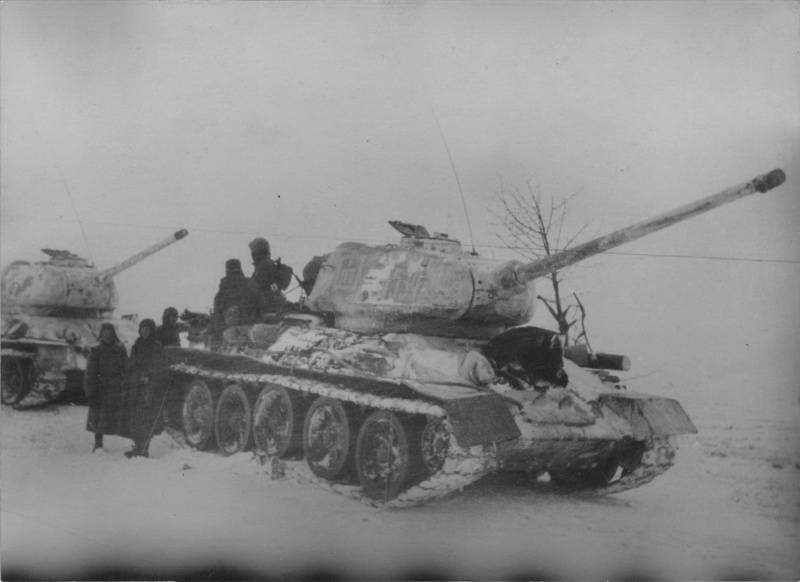
Plan of the Lower Silesian Operation
The new operation became the development of the Wisla-Oder strategic operation and part of the general offensive of the Red Army on the Soviet-German front. Marshal Ivan Stepanovich Konev recalled:
Initially, the Soviet command planned to develop an offensive in the Berlin direction from the bridgeheads on the Oder. The troops of the front dealt three blows: 1) the most powerful group, which included the 3rd Guards, 6th, 13th, 52nd, 3rd Guards Tank and 4th Tank Armies, the 25th Tank, The 7th Guards Mechanized Corps, was concentrated on the bridgehead north of Breslau; 2) the second group was located south of Breslau, the 5th Guards and 21st Armies were concentrated here, reinforced by two tank corps (4th Guards Tank and 31st Panzer Corps); 3) on the left flank of the 1st UV front, the 59th and 60th armies, the 1st Guards Cavalry Corps were to attack. Later, the 1st Guards Cavalry Corps was transferred to the main direction. From the air, Konev’s troops were supported by the 2nd Air Army. In total, the troops of the 1st UV totaled about 980 thousand people, about 1300 tanks and self-propelled guns, about 2400 aircraft.
The Soviet command decided to throw both tank armies (the 4th Panzer Army of Dmitry Lelyushenko, the 3rd Guards Panzer Army of Pavel Rybalko) into battle in the first echelon, not to wait for the enemy defense to break through. This was due to the fact that the offensive began without a pause, the rifle divisions were bloodless (they left 5 thousand people each), tired. Tank units were supposed to strengthen the first strike, break the enemy’s defenses and quickly enter the operational space.
Battle
The offensive began on the morning of February 8, 1945. The artillery training had to be reduced to 50 minutes due to lack of ammunition (communications were stretched, railways were destroyed, supply bases remained far behind). In the areas of the main attack in the Breslau region, the front command created a great advantage: in the arrows at 2: 1, in the artillery at 5: 1, in the tanks at 4,5: 1. Despite the reduction of artillery preparation and bad weather, which interfered with effective actions aviationGerman defense was on the first day of the operation. Soviet troops created a gap up to 80 km wide and in depth up to 30-60 km. But in the future, the pace of attack fell sharply. In the following week, until February 15, the right flank of the 1st UV managed to pass only 60-100 km with combat.
This was due to a number of reasons. The Soviet infantry was tired, suffered heavy losses in previous battles, did not have time to recover. Therefore, the arrows passed per day no more than 8-12 km. The Germans fought fiercely. Surrounded by German garrisons remained in the rear, which diverted part of the forces. The 3rd Guards Army of Gordov blocked Glogau (up to 18 thousand soldiers), the fortress was taken only in early April. The area was wooded, in some places swamps, the spring thaw began. This reduced the pace of movement, it was possible to move mainly only along the roads.
The troops of the right wing of the front reached the Beaver River, where the Nazis had a rear line. Soviet troops crossed the river on the move, captured bridgeheads and began to expand them. Lelyushenko’s army broke through to the Neisse River. However, the infantry of the 13th Army did not keep pace with the mobile units. The Nazis were able to cut off the tank army from the infantry and it fought surrounded for several days. Comfront Konev had to urgently go to the location of the 13th army of Pukhov. With the counter-strikes of the 13th and 4th tank armies (she turned back), the blockade was broken. An important role in this battle was played by Soviet aviation, which had air supremacy. The weather was good these days, and Soviet aircraft inflicted a number of heavy blows on the enemy. The 3rd Guards Army of Gdov, having left part of the forces for the siege of Glogau, also reached the border of the river. Beaver. Thus, despite some troubles, the troops of the right wing of the 1st UV successfully attacked.
In the center and on the left wing of the front, the situation was more complicated. The Nazis put up strong resistance in the area of the Breslav fortified area. This delayed the westward movement of the second strike group of the front — the 5th Guards and 21st Armies. The 6th army of Gluzdovsky, which was supposed to take Breslau, first broke through the defenses, and then dispersed forces and got bogged down in the enemy’s defense. The left wing of the front — the 59th and 60th armies — could not break open the Nazi defenses at all. Here, our forces were opposed by approximately equal strength enemy forces. Already on February 10, Konev was forced to order the armies of the left wing to go on the defensive. This worsened the situation in the center of the front, here the Soviet armies had to fear flanking attacks of the enemy.
Meanwhile, the German command, trying to prevent the fall of Breslau, strengthened the troops in this direction. Here came marching replenishment and individual parts. Then the 19th and 8th Panzer and 254th Infantry Divisions were transferred from other sections. The Nazis constantly counterattacked the 6th Army of Gluzdovsky and the 5th Guards Army of Zhadov. Our troops fought hard battles, repelled enemy attacks, and continued to move along communications, knocking down German barriers and storming strongholds. To strengthen the firepower of the advancing troops, Konev transferred the 3rd Guards Division of heavy rocket launchers from the front reserve to the Breslav direction.
In order to develop the advance of the front, it was necessary to resolve the issue with the Breslav fortified area. The capital of Silesia had to be taken or blocked in order to free the troops for a further offensive to the west. The command extended the front of the 52nd Army of Koroteev to narrow the section of the 6th Army and free some of its forces to attack Breslau. The 5th Guards Army was reinforced with the 31st Panzer Corps of Kuznetsov. So that the Nazis could not punch the way to Breslau with an external blow, Konev deployed the 3rd Guards Tank Army Rybalko to the south and southeast. Two tank corps, which at that time reached Bunzlau, turned south.
On February 13, 1945, the mobile formations of the 6th and 5th Guards armies united west of Breslau, encircling 80 troops. enemy group. At the same time, Rybalko tankers inflicted a strong flank attack on the 19th tank division of the enemy. As a result, the German command could not immediately throw troops to break through the encirclement ring, while it was weak. Our troops quickly tightly sealed the "cauldron", not giving the Germans the opportunity to unlock it and break out of the city itself. Konev decided that it was not necessary to divert significant front forces for a decisive assault on Breslau. The city had a circular defense and was prepared in street battles. Only parts of the 6th Army of General Vladimir Gluzdovsky were left to besiege the city. It consisted of the 22nd and 74th rifle corps (at different times 6-7 rifle divisions, 1 fortified area, tank heavy and tank regiments, heavy self-propelled artillery floor). On February 5, the 18th Guards Army of Zhadov was sent to the outer circle of encirclement. As a result, the forces of the 6th Army with parts of reinforcement were approximately equal to the Breslau garrison.
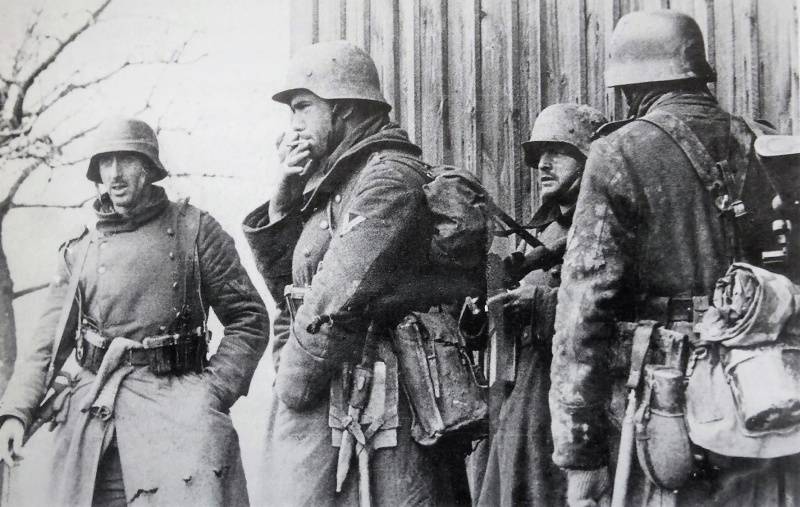
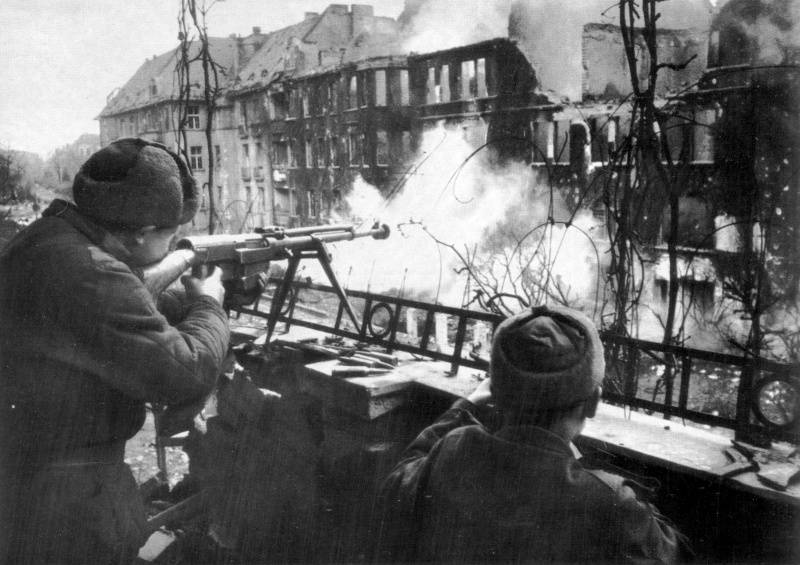
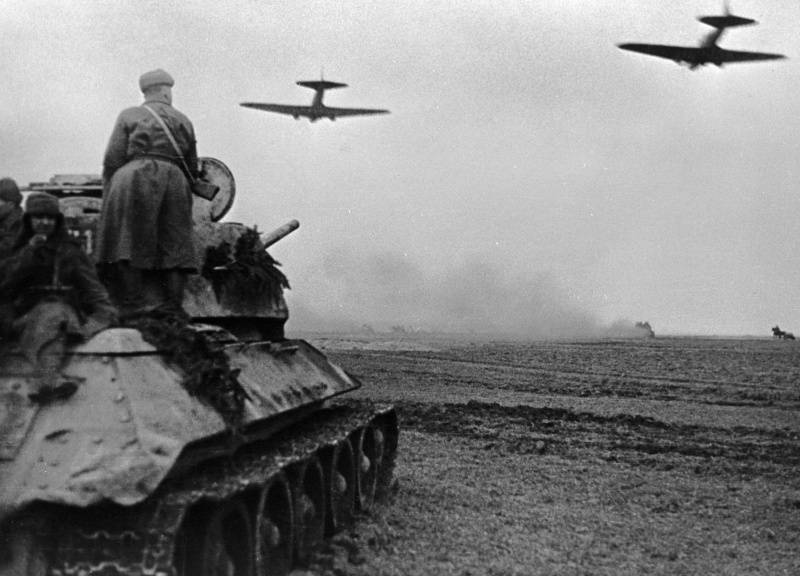
Operation Development
Thus, the first stage of the operation was generally successful. The Germans were defeated. The German 4th Panzer Army was defeated, its remnants fled for the Beaver and Neisse rivers. Our troops captured a number of major centers of Lower Silesia, including Bunzlau, Lignitz, Zorau, etc. The garrisons of Glogau and Breslau were surrounded and doomed to defeat.
However, this success was achieved at the limit of the physical and moral strength of the fighters and the material capabilities of the 1st UV. The soldiers were tired of continuous battles, 4-5 thousand people were left in the divisions. Mobile hulls lost up to half of their fleet (not only combat losses, but also equipment wear, lack of spare parts). The railways were not restored, supply problems began. The rear bases are even more behind. Ammunition and fuel delivery rates were reduced to a critical minimum. Aviation could not fully support the ground forces. Spring thaw struck at unpaved airfields, there were few concrete strips and they were far behind. The Air Force had to operate from the rear, which sharply reduced the number of sorties. Weather conditions were bad (for the entire duration of the operation only 4 flight days).
Neighbors could not support the onset of the 1st UV. Zhukov's troops fought hard battles in the north, in Pomerania. At the junction with the Konev front, the 1st BF went on the defensive. The 4th Ukrainian Front was not successful. This allowed the Germans to transfer troops to the Silesian direction from other sectors. Konev’s armies no longer had the same advantage as at the beginning of the operation.
As a result, the front command decided that the strike in the Berlin direction should be postponed. A further attack on Berlin is dangerous and will result in large unjustified losses. By February 16, 1945, the operation plan was changed. The main strike force of the front was to go to the Neisse river and seize bridgeheads; the center is to take Breslau, the left flank is to throw the enemy into the Sudeten Mountains. At the same time, there was a restoration of the work of the rear, communications and normal supply.
On the right flank there were stubborn battles in the area of the cities of Guben, Khristianstadt, Zagan, Zorau, where the enterprises of the military industry of the Reich were located. The 4th Panzer Army again approached Neisa, followed by the troops of the 3rd Guards and 52nd Armies. This made the Germans finally abandon the line p. Beaver and withdraw troops to the line of defense Neisse - from the mouth of the river to the city of Penzig.
The 3rd Guards Tank Army Rybalko returned to the Bunzlau area and was aimed at Goerlitz. Here Rybalko made a number of miscalculations, underestimating the enemy. The Germans prepared a strong flank counterattack in the Laubana area. Soviet tank corps, exhausted by previous battles, and stretched out on a march, came under enemy counterattack. The Nazis came to the rear and flank of the Soviet 7th and partly 6th Guards Tank Corps and tried to cover our tank army from the east. The fighting was extremely fierce. Some settlements and positions several times passed from hand to hand. Our command had to reorganize the forces of the 3rd Guards Tank Army, to transfer units of the 52nd Army to help it. Only by February 22, the German strike group was defeated and driven south. As a result, Rybalko’s army was unable to fulfill the main task - to take Görlitz. Subsequently, heavy fighting in the direction of Goerlitz and Lauban continued. Rybalko’s army was taken to the rear for replenishment.
On this operation was completed. The command of the 1st UF began to develop a plan for the Upper Silesian operation, since as a result of the Lower Silesian operation, such a front line was formed that both sides could inflict dangerous flank attacks. 1st UV could attack the enemy in Upper Silesia. The Wehrmacht had the opportunity of a flank attack on the southern wing of the Konev front in the direction of Breslau and try to recapture the Silesian region.
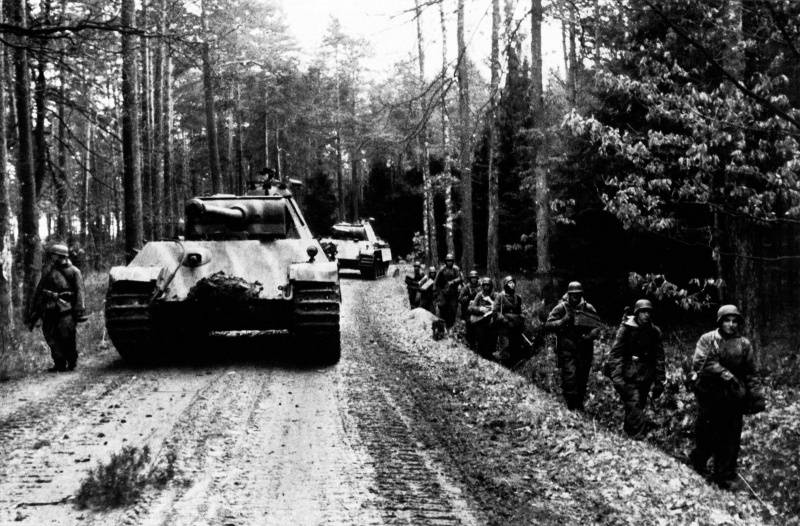
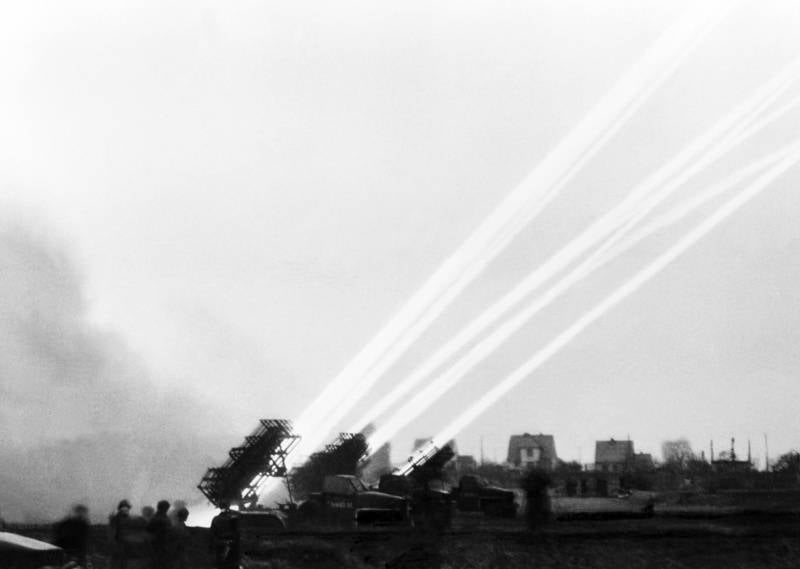
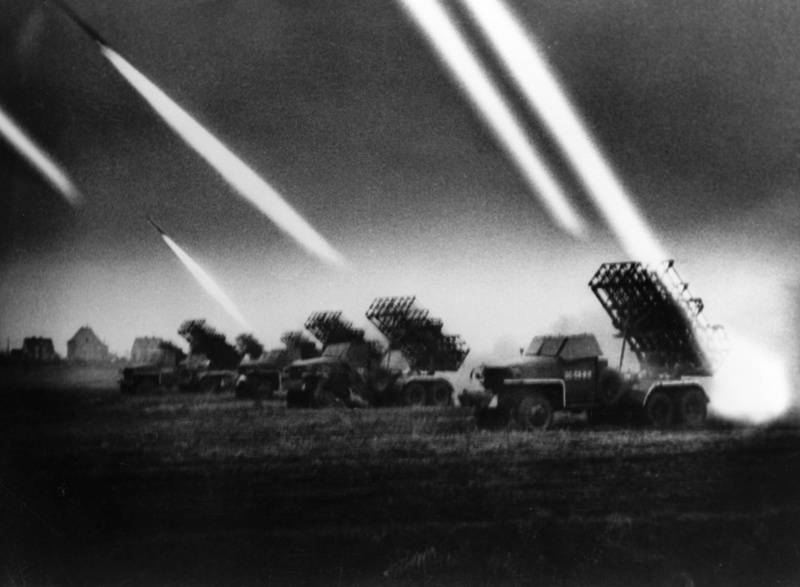
Breslau Fortress
Already in the summer of 1944, Hitler declared the Silesian capital city of Breslau (Russian. Breslavl, Polish. Wroclaw) a "fortress." Gauleiter of the city and the commandant of the defense district appointed Karl Hanke. The population of the city before the war was about 640 thousand people, and during the war it grew to 1 million people. Residents of western cities were evacuated to Breslau.
In January 1945, the Breslau garrison was formed. Its main became the 609th Special Purpose Division, 6 serf regiments (including artillery), separate units of infantry and tank divisions, artillery and fighter units. The Breslau fortress had a large combat reserve, which consisted of fighters of the Volkssturm (militia), workers of military factories and enterprises, members of national socialist structures and organizations. In total, there were 38 Volkssturm battalions, up to 30 thousand militias. The entire garrison numbered about 80 thousand people. The commandants of the fortress garrison were Major General Hans von Alphen (March 7, 1945) and Infantry General German Nihof (until the surrender of May 6, 1945).
Even during the Sandomierz-Silesian operation, the leadership of Breslau, fearing the blockade of the city, where there were a lot of refugees and the breakthrough of Soviet tanks, announced the evacuation of women and children to the west, towards Opperau and Kant. Some of the people were taken out by rail and by road. But there was not enough transport. On January 21, 1945, Gauleiter Hanke ordered the refugees to walk west on foot. During the trip to the west, it was frosty, country roads were littered with snow, many people died, especially young children. Therefore, this event was called the “death march”.
To be continued ...
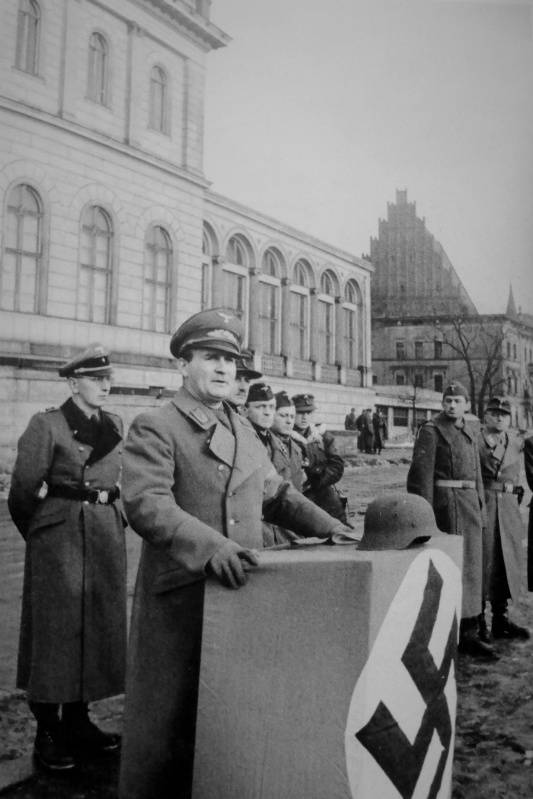
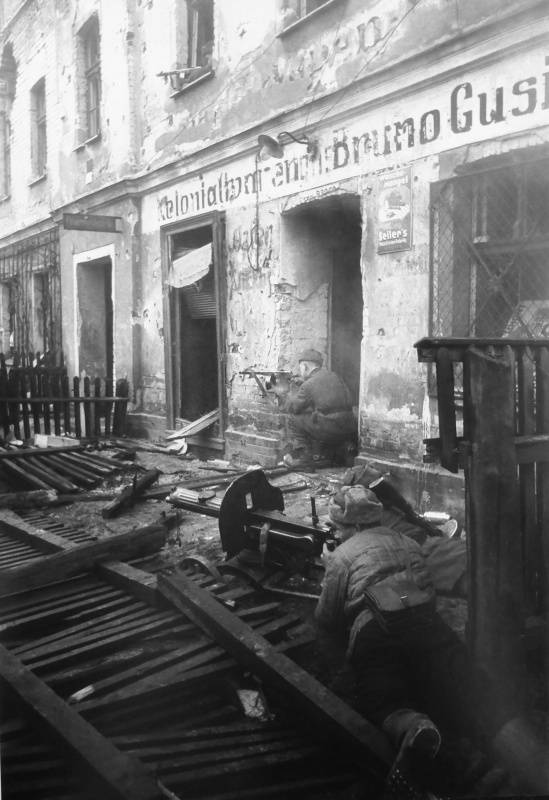
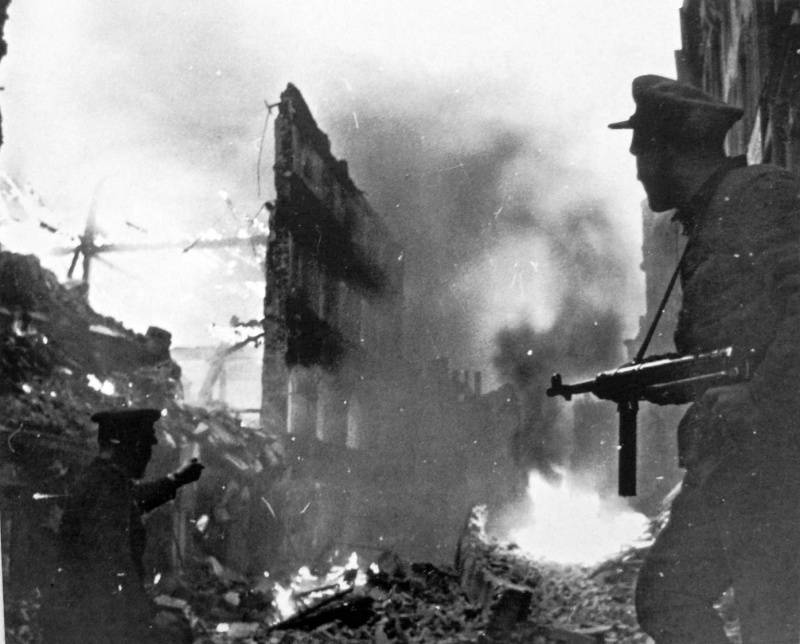
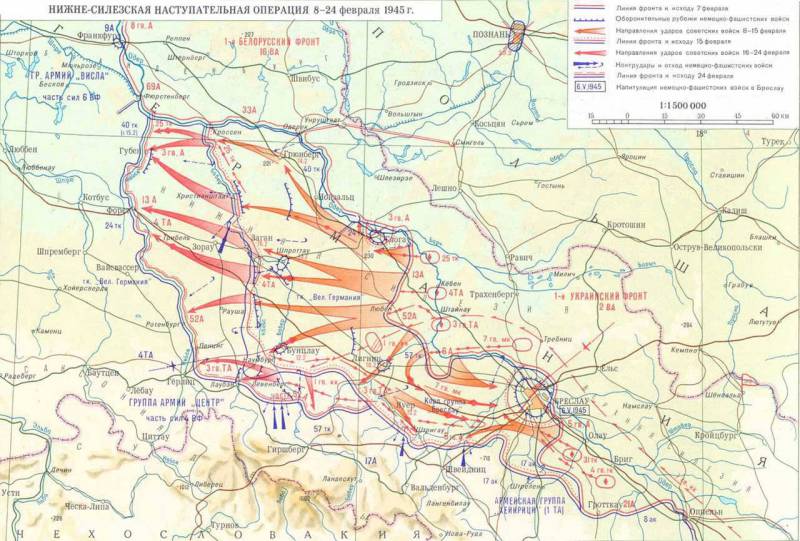
Information